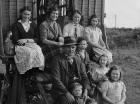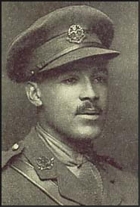Diversity
Diversity is based on an understanding of the past of the many individual experiences and localities in order to establish a broadly based understanding of the past. In the same way that the big picture relates to local, national and world dimension. Diversity needs to include an appreciation of experiences from rich and poor, men, women and children and different ethnic groups and different period of the past.
Sort by:
Date (Newest first) | Title A-Z
Show:
All |
Articles |
Podcasts |
Multipage Articles
-

Why are there so many ‘mummies’ in Western museums?
ArticleClick to view -

Significant anniversaries: The Bristol Bus Boycott, 1963
ArticleClick to view -

Teaching black British history through local archives
ArticleClick to view -

Diversity in Primary History
ArticleClick to view -

Wangari Maathai as a significant individual
ArticleClick to view -

50th anniversary of the UK’s first official Pride march: 1 July 2022
ArticleClick to view -

Promoting Gypsy, Roma and Traveller heritage in your primary history curriculum
ArticleClick to view -

Recorded webinar: Exploring representations and attitudes to disability across history
ArticleClick to view -

Walter Tull: Sport, War and Challenging Adversity
ArticleClick to view -

Teaching Gypsy, Roma and Traveller history
ArticleClick to view -

Pull-out posters: Primary History 88 – Diversity
ArticleClick to view -

Arthur Wharton: the world’s first professional black footballer
ArticleClick to view -

Recorded webinar: What is diversity within the primary history curriculum?
ArticleClick to view -

Scheme of work: Journeys - the story of migration to Britain
ArticleClick to view -

History in the news: George Floyd protest in Bristol – Colston statue toppled
ArticleClick to view -

Re-evaluating the role of statues
ArticleClick to view -

Migration to Britain through time
ArticleClick to view -

Scheme of Work: Grace O'Malley
ArticleClick to view -

Primary History Summer Resource 2019: Diversity
ArticleClick to view -

Three first-class ladies – teaching significant individuals in Key Stage 1
ArticleClick to view

